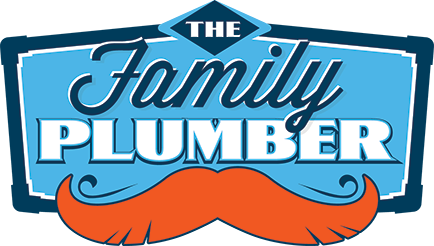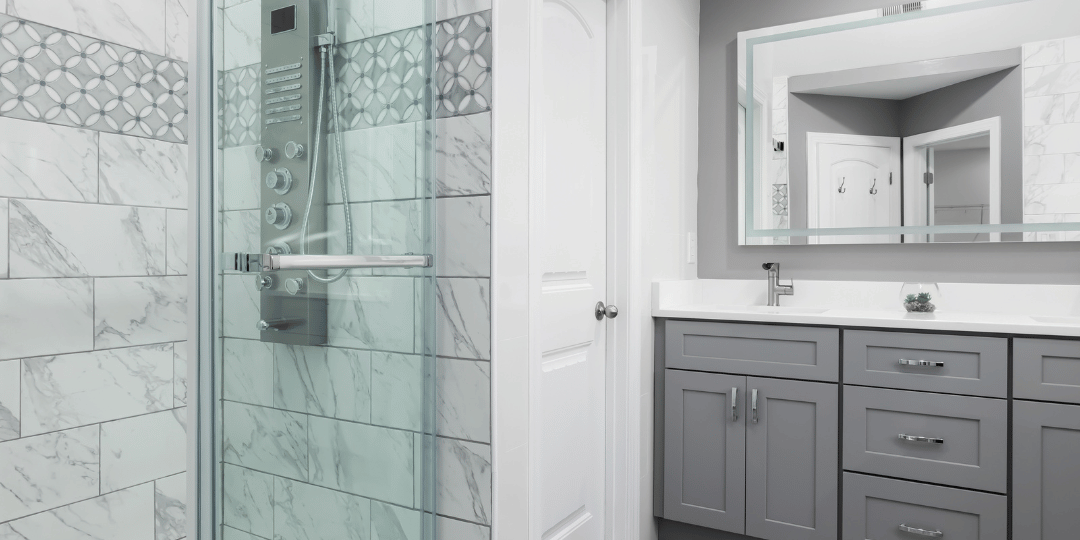A leaking shower can cause more than just an annoying drip—it can lead to water damage, mold growth, and costly repairs if not addressed promptly. At The Family Plumber, we understand how frustrating shower leaks can be for homeowners and businesses alike in the greater Surprise, Arizona area.
In this article, we’ll walk you through everything you need to know about shower leak repair, from identifying common leak sources to simple DIY fixes and when it’s time to call in professional help. Along the way, we’ll also touch on related plumbing repairs such as sewer and drain maintenance, water heater repair & installation, and more to keep your entire plumbing system in top shape.
Let’s dive in and help you protect your home or business from the damage a shower leak can cause.
How to Fix a Leak from a Shower
Fixing a shower leak quickly is essential to prevent water damage and costly repairs. Here’s a simple step-by-step guide to help you tackle common shower leaks:
Step 1: Identify the Source
The first step is to pinpoint where the leak is coming from. Common areas include the showerhead, faucet, shower door seals, or the base of the shower. Use a flashlight to inspect these areas carefully.
Step 2: Tighten Loose Fixtures
Sometimes, leaks happen because showerheads or faucets are loose. Use a wrench to gently tighten any loose connections, but be careful not to overtighten.
Step 3: Replace Worn-Out Seals or Washers
Old or damaged seals and washers in faucets or shower valves can cause leaks. These can often be replaced easily with parts from a hardware store.
Step 4: Reseal the Shower Base or Door
If water is leaking at the base or door, it may be time to reseal with waterproof silicone caulk. Remove old caulking, clean the area thoroughly, and apply a new bead of caulk.
Step 5: Check the Drain
Leaks can also occur due to damaged or improperly sealed drains. Inspect the drain for cracks or loose fittings and replace or repair as needed.
When to Call Professionals
If your leak persists after these steps or if you suspect the leak is beneath the shower base or within the walls, it’s time to call The Family Plumber. Our expert leak detection services can locate hidden leaks and provide reliable plumbing repairs to keep your home safe and dry.
Where Is the Most Common Place for a Shower to Leak?
Knowing where showers typically leak can help you catch problems early and avoid costly damage. The most common places for a shower to leak include:
- Shower Pan or Base:
Cracks or damage to the shower pan, which is the waterproof base under your shower, often cause leaks that can lead to water pooling beneath your bathroom floor. - Grout and Tile Joints:
Over time, grout can crack or wear away, allowing water to seep behind tiles and into the walls or floor. - Shower Door Seals:
Worn or damaged seals around shower doors or curtains often let water escape the shower enclosure. - Faucets and Showerheads:
Loose fittings, worn washers, or damaged cartridges in faucets and showerheads can cause leaks during use or when the shower is off. - Drain Assembly:
A poorly sealed or cracked drain can leak water beneath the shower, causing damage to the subfloor.
Regular leak detection and maintenance of these areas, combined with prompt plumbing repairs by professionals like The Family Plumber, can prevent extensive water damage and costly repairs.
Why Is My Shower Leaking at the Bottom Underneath?
If you notice water pooling at the bottom of your shower or damage beneath your bathroom floor, it’s a sign of a leak that needs immediate attention. Here are common reasons why your shower might be leaking underneath:
- Damaged Shower Pan or Base:
The shower pan acts as the waterproof barrier. Cracks, holes, or deterioration in the pan allow water to seep through to the floor below. - Worn or Missing Sealant:
Over time, silicone caulk or grout around the shower base can crack, peel, or become moldy, breaking the seal and letting water escape. - Faulty Drain or Drain Seal:
If the drain is improperly installed or its seal has degraded, water can leak beneath the shower. This is a common issue that requires professional repair. - Leaks in Plumbing Lines:
Pipes under or near the shower may develop leaks due to corrosion, loose fittings, or damage, causing water to collect underneath.
Ignoring these issues can lead to serious problems like wood rot, mold growth, and structural damage. At The Family Plumber, our skilled technicians offer thorough leak detection and expert plumbing repairs to fix leaks quickly and protect your home.
How Do I Find the Source of a Shower Leak?
Finding the exact source of a shower leak can be tricky, but it’s crucial to fix the problem effectively. Here are some steps and tips to help locate the leak:
1. Visual Inspection
Start by carefully inspecting the shower area, including the showerhead, faucets, grout lines, caulking, shower door seals, and the drain. Look for visible cracks, gaps, or water stains.
2. Check for Water Damage
Look around the bathroom floor and walls for signs of water damage such as discoloration, warping, or mold, which can indicate where water is escaping.
3. Perform a Water Test
Turn on the shower and observe where the water escapes. Use a dry cloth to wipe areas and see if they get wet again quickly.
4. Inspect Behind Walls or Underneath
If the leak isn’t visible, you may need to check behind the shower walls or under the shower pan. This often requires removing access panels or tiles and should be done by a professional.
5. Use Professional Leak Detection Tools
Experts like The Family Plumber use advanced tools such as moisture meters, thermal cameras, and sewer cameras to detect hidden leaks in pipes, drains, or the shower base.
By combining these methods, you can accurately locate leaks before they cause extensive damage. Early leak detection is key to minimizing repair costs and maintaining your home’s plumbing system.
How Do You Seal a Leaking Shower Base?
Sealing a leaking shower base is an important step to prevent water damage and keep your bathroom dry. Here’s how to properly seal a leaking shower base:
Step 1: Clean the Area
Remove any old caulk or sealant around the shower base using a caulk remover or utility knife. Clean the surface thoroughly to remove soap scum, mold, and debris. Make sure the area is completely dry before proceeding.
Step 2: Inspect for Damage
Check the shower base for any cracks or holes. Small cracks can be repaired using waterproof epoxy or a shower repair kit. For extensive damage, you may need to replace the shower base or call a professional.
Step 3: Apply Waterproof Sealant
Use a high-quality silicone caulk designed for bathrooms to reseal the edges where the shower base meets the wall or floor. Apply a smooth, continuous bead of caulk to create a watertight seal.
Step 4: Allow to Cure
Let the sealant dry and cure as per the manufacturer’s instructions, usually 24 hours, before using the shower again.
Step 5: Regular Maintenance
Check the seals periodically and reseal as necessary to maintain a strong waterproof barrier.
If you’re unsure about the repair or your shower leak persists, contact The Family Plumber for expert plumbing repairs. Our team also handles related services such as bathtub repairs, faucet maintenance, and drain cleaning to keep your plumbing system in perfect condition.
Can You Reseal a Shower Yourself?
Resealing a shower yourself is definitely possible and can save you money on minor repairs. However, it requires some care and the right materials to ensure a lasting, waterproof seal. Here’s what you need to know:
DIY Shower Resealing Tips:
- Use the Right Materials:
Choose a high-quality, mildew-resistant silicone caulk designed specifically for bathrooms and wet areas. - Prepare the Surface:
Remove all old caulk and thoroughly clean the area to ensure the new sealant adheres properly. - Apply Evenly:
Use a caulking gun to apply a smooth, continuous bead of caulk along the edges where the shower base meets the wall and floor. - Smooth the Caulk:
Use a caulk finishing tool or a wet finger to smooth out the caulk for a neat finish and better seal. - Allow Proper Curing Time:
Let the sealant cure fully—usually 24 hours—before using the shower to prevent leaks.
When to Call a Professional
While DIY resealing works well for minor leaks and maintenance, some situations require expert help, including:
- Persistent or large leaks under the shower base
- Damage to the shower pan or plumbing lines
- Leaks related to faulty drains, sewers, or hidden pipe issues
At The Family Plumber, we offer expert leak detection and plumbing repairs to handle complex shower leak issues and ensure your plumbing system, including water heater repair & installation, toilet repair & installation, sinks, and garbage disposal installation, is functioning smoothly.
Protect Your Home with Professional Shower Leak Repair
A leaking shower is more than just an inconvenience—it can lead to serious water damage, mold growth, and costly repairs if left untreated. Whether you’re tackling minor resealing yourself or facing a stubborn leak that requires professional attention, timely action is key.
At The Family Plumber, we specialize in expert shower leak repair and comprehensive plumbing repairs throughout the greater Surprise, Arizona area. From leak detection and drain maintenance to water heater repair & installation and toilet repair & installation, our experienced team is ready to keep your plumbing system in top shape.
Don’t let a small leak turn into a big problem. Contact The Family Plumber today for reliable, fast, and affordable plumbing services. Schedule your consultation now and protect your home with the trusted experts in residential and commercial plumbing!

